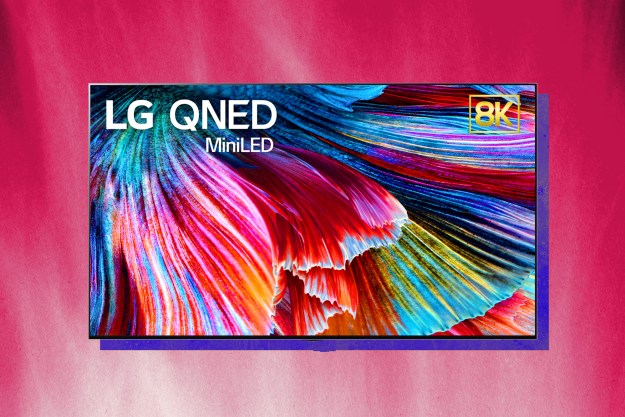
We can’t say we didn’t see Toshiba’s new Cell TV coming – the company demonstrated a prototype of the technology last year – but we couldn’t have guessed just how crazy the company would go in piling features into its new flagship. Let’s just hope they don’t sink it. If you haven’t caught the official press specs, here’s a summary: It has absolutely everything, ever. After poring over all the details, here the top 10 features we think make it one of the most promising displays we’ve seen so far.
1. TriVector 2D to 3D Conversion
Consider us incredibly skeptical of the implementation, but Toshiba claims its TriVector technology can actually convert any 2D video to 3D. We suspect it will look something like the spiced-up old-time photographs in Ken Burns documentaries (basically cutout characters against a flat background) but it could be compelling enough to make Toshiba the forerunner in 3D before true 3D content becomes widely available.
2. Zira2 Localized Dimming
Existing TVs with localized dimming – the tech that automatically dims the LEDs lighting dim parts of the screen – already dropped jaws in 2009. According to Toshiba, none of them had more than 96 individually controlled zones of lighting. Cell TV will offer a stunning 512.
3. Wireless HD
Ever tried to snake 25 foot HDMI cables through a wall to make your wall-mounted flat panel HDTV look prim and proper? Not fun. Or practical. The Cell TV will come with a separate sending unit where you can connect your HDMI inputs, to send them wirelessly to the set itself.
4. Cell Processor
A TV with the same processor used in Sony’s PlayStation 3? Yes please. Toshiba’s assertion that it’s 10 times faster than most desktop computers might be a bit of crafty number manipulation, but there’s no denying this thing is a beast compared to the chips humming in most HDTVs: eight cores running at 3.2GHz for 200 gigaflops of computational horsepower.
5. Built-in 1TB Hard Drive
And you thought being able to plug an 8GB thumb drive into a USB port was cool. The 1TB drive in the Cell TV will not only be able to record live TV, it will serve as a home media server for your entire household, letting you watch the same stuff available on your TV from a desktop, laptop or smartphone on the same network.
6. Resolution+
Toshiba technically has this feature divided into Super Resolution+ for scaling content like DVDs up to more HD-like quality, and Net Resolution+ for scaling Web video into, well, anything but garbage. Sure, it’s a fancy name for interpolation (intelligently adding pixels where there were none) but coupled with the Cell processor, it’s above and beyond what your standard box does.
7. Built-In Blu-ray Player with Recording
Eliminating one more piece of clutter in your A/V cabinet is one clear benefit here, but even more exciting, the player will be able to record Blu-ray content to its internal 1TB hard drive for archiving. In other words, rip your entire Blu-ray collection (which couldn’t be more than a couple discs at this point unless you’re a millionaire) and never have to swap discs again. DRM restrictions could place a major damper on this feature, though, so stay tuned to see whether it works as should after the MPAA has its way with it.
8. ClearScan 480
Again, we have a little bit of numeric trickery since the Cell TV will reach 480 frames per second with backlight scanning, but even without it, you’re looking at a true 240Hz LCD panel. When used with the set’s 3D capabilities, Toshiba claims each eye experiences true 240Hz motion.
9. AutoView RGB
Every living room is a little bit different, and Toshiba’s new AutoView RGB light sensor will accommodate accordingly. Unlike previous iterations, which merely adjusted screen brightness in response to room brightness, contrast, sharpness and other basic settings, the next-gen model uses an RGB sensor to adjust color temperature relative to the color temperature in your room. In other words, a Cell TV in a fluorescent-lit room and an incandescent-lit room will look different, automatically optimizing themselves for the lighting conditions.
10. Net TV
Wireless 802.11n connectivity will give the Cell TV access to Vudu, CinemaNow and Netflix for movies, Pandora for music, Flickr for photos, Facebook and Twitter for social networking, and RallyPoint for fantasy sports.
Editors' Recommendations
- Roku TV turns 10, celebrates with new Pro Series mini-LED sets
- Toshiba brings 120Hz to Fire TVs with new flagship M550-Series
- Toshiba C350 Fire TV does 4K, HDMI 2.1, and Dolby Vision, starting at $350
- The future of TV: New advances in display tech will transform your TV
- Panasonic’s flagship OLED TV is covered in speakers, but it’s not coming to U.S.


